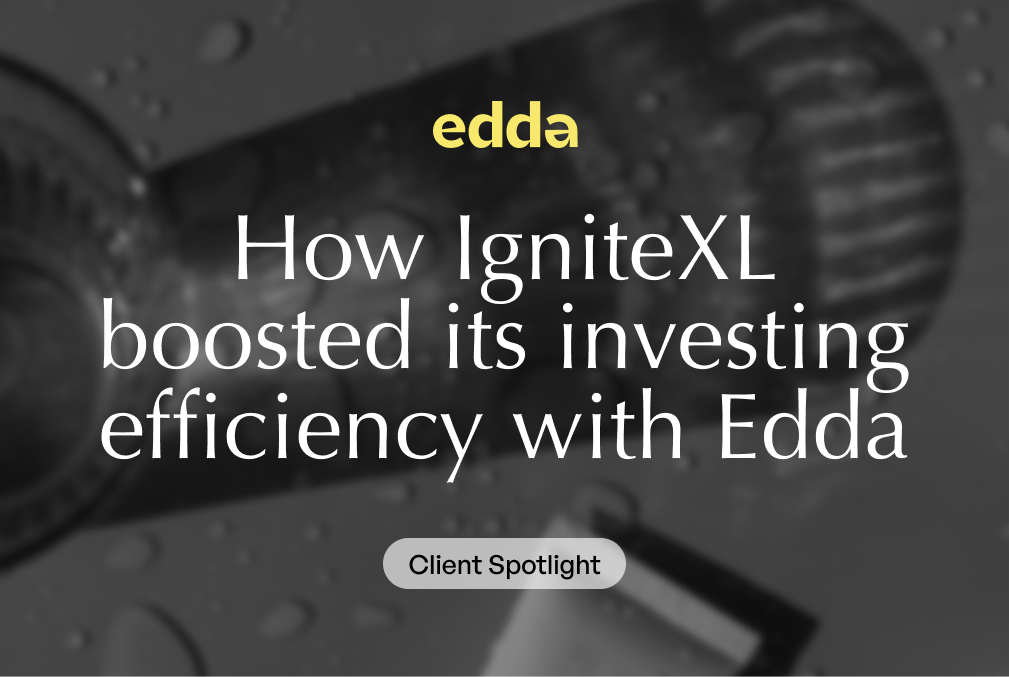In venture capital, the introduction of continuation funds is sparking considerable interest and debate among industry stakeholders.
What is a continuation fund?
A continuation fund is a financial vehicle in private equity and venture capital that extends the investment period for assets needing more time to mature, offering existing investors options for liquidity or continued involvement.
These innovative investment vehicles represent a significant departure from traditional venture capital structures, offering both limited partners (LPs) and venture capitalists (VCs) new strategies for managing liquidity and investment timelines.
While the potential benefits of continuation funds are clear, including enhanced liquidity options for LPs and extended value creation periods for venture capital companies, the approach to these funds is characterized by a blend of enthusiasm and pragmatism.
This careful optimism is rooted in the complex nature of continuation funds, which require thoughtful structuring, transparent valuation processes, and strategic alignment with long-term investment goals.
In this article, we’ll dive deeper into the allure of continuation funds, exploring the strategic benefits they offer to LPs and VCs, the operational advantages they bring, and the practical considerations that must be taken into account. By examining these aspects, we aim to provide a comprehensive understanding of continuation funds and their emerging role in the venture capital ecosystem.
In addition, discover how Edda’s venture capital portfolio management software, a favorite alternative to Affinity venture capital tools, is a necessary part of any VC tech stack, integral to managing continuation funds.
The Allure of Continuation Funds
The growing interest in continuation funds within the venture capital sphere can be attributed to several factors that resonate with both LPs and VCs. These factors highlight the strategic and operational benefits that continuation funds offer, making them an attractive proposition for stakeholders looking to navigate the complexities of venture investing more effectively.
Enhanced Liquidity for LPs
Continuation funds stand out primarily due to their provision of early and enhanced liquidity, addressing a fundamental concern for LPs. Traditionally, LPs are accustomed to the long-term commitment of capital in venture funds, with returns materializing only upon successful exits like IPOs or acquisitions, a process often fraught with delays and uncertainties.
These funds disrupt the conventional wait-and-see paradigm by enabling LPs to liquidate their interests in portfolio companies or fund positions ahead of traditional exit milestones. This flexibility not only provides a crucial liquidity infusion in fluctuating market conditions or when unexpected capital needs arise but also allows LPs to reallocate their capital more strategically, aligning with their investment objectives and timelines.
Strategic Flexibility & Portfolio Management
Continuation funds offer LPs unparalleled strategic flexibility and agility in portfolio management, enabling them to actively adjust their exposure to various sectors, stages of company growth, and risk profiles.
This capability allows LPs to sell stakes in specific investments, facilitating a proactive approach to rebalancing their portfolios in alignment with evolving objectives, risk appetites, and market conditions.
Such dynamic portfolio management, a stark contrast to the traditionally illiquid nature of venture capital investments, empowers LPs to optimize their investment strategies in real time, ensuring their portfolios remain aligned with their strategic vision and the ever-changing investment landscape.
Capital Reallocation for New Opportunities
The liquidity generated from selling positions in continuation funds can be redeployed into new investment opportunities, enabling LPs to maintain a diversified and vibrant investment portfolio. This capital reallocation is particularly advantageous in a fast-paced investment landscape, where the ability to seize emerging opportunities can dictate the overall success and growth of an LP’s investment portfolio.
Continuation funds also provide VCs with greater flexibility in capital management and allocation decisions. By transferring select investments to a continuation fund, VCs can free up capital within the main fund, ensuring that resources are allocated efficiently and in alignment with the fund’s strategic objectives. This flexibility can be particularly valuable in managing fund lifecycles and ensuring that capital is deployed in a manner that maximizes investor returns.
Extended Value Creation for VCs
Continuation funds provide VCs with a strategic and operational advantage by extending the horizon for value creation within their portfolio companies, mitigating the time constraints inherent in traditional fund structures that often compel a premature search for exit opportunities.
By enabling VCs to sustain or even augment their involvement with high-potential companies beyond the typical investment period, continuation funds allow for deeper engagement during critical growth phases.
This extended support can be crucial for companies in sectors with longer maturation periods, enabling them to achieve market dominance and profitability with the continued strategic guidance and financial backing of their VCs, potentially leading to significantly enhanced returns as these businesses fully mature and scale.
Enhancing Fund Performance Metrics
The use of continuation funds can positively impact key fund performance metrics that are closely watched by existing and prospective LPs. By facilitating earlier liquidity events through these funds, VCs can improve the Distribution to Paid-In (DPI) ratio of their funds, a critical measure of the return of capital to investors.
A healthier DPI ratio can make a VC firm more attractive to investors, demonstrating an ability to not only generate high returns but also return capital in a more timely fashion.
Strategic Exits Based on Valuation & Market Timing
Continuation funds also offer LPs the opportunity to make strategic exit decisions based on their assessment of a portfolio company’s valuation and the broader market environment. Instead of being locked into the lifecycle of a traditional venture fund, LPs can choose to exit positions when they believe the valuation is attractive or when market conditions are favorable, thereby potentially maximizing their returns.
These strategic advantages highlight the transformative potential of continuation funds for LPs, offering a blend of liquidity, flexibility, and control that enhances their ability to navigate the complex venture capital landscape effectively.
Alignment with LP Expectations
By offering liquidity solutions through continuation funds, VCs can better align their funds with the liquidity preferences and expectations of their LPs. This alignment can lead to stronger relationships with existing LPs, characterized by increased trust and satisfaction.
Furthermore, a track record of providing flexible liquidity options can enhance a VC firm’s reputation in the broader investment community, potentially easing fundraising efforts for future funds and attracting a broader base of LPs.
The allure of continuation funds lies in their potential to redefine traditional venture capital dynamics, offering both LPs and VCs innovative ways to achieve their investment objectives. This fresh approach to venture financing is driving the enthusiasm for continuation funds, as stakeholders explore the possibilities they present for enhancing liquidity, optimizing investment strategies, and maximizing value creation.
Navigating the Challenges
While continuation funds present attractive opportunities for liquidity and extended investment horizons, they also introduce a set of complexities and considerations that both LPs and VCs must navigate. Understanding these challenges is crucial for stakeholders to maximize the benefits while mitigating potential risks associated with these vehicles.
Structuring & Governance Challenges
The creation and operation of a continuation fund involve complex structuring and governance considerations to ensure alignment among all parties involved.
This includes defining clear terms regarding the valuation of transferred assets, the rights and obligations of incoming and exiting investors, and the management fees associated with the continuation fund. Ensuring transparency and fairness in these arrangements is critical to maintaining trust and protecting the interests of all stakeholders.
Valuation & Fairness Opinions
Valuation is a central challenge in the setup of continuation funds, particularly when transferring assets from an existing fund to a continuation vehicle. Establishing a fair market value for these assets is essential to ensure equitable treatment for both selling and remaining LPs, as well as for the incoming investors in the continuation fund.
Engaging independent third parties to provide fairness opinions can be a prudent approach to validate valuations and mitigate conflicts of interest.
Regulatory & Compliance Considerations
Continuation funds, like all investment vehicles, are subject to regulatory scrutiny and must adhere to relevant securities and investment laws. Navigating these regulatory landscapes requires careful planning and compliance to avoid potential legal pitfalls. This includes considerations related to investor qualifications, securities registration exemptions, and cross-border investment regulations, among others.
Potential for Conflicts of Interest
The interests of the various parties involved in a continuation fund transaction—existing LPs, VCs, and new investors—must be carefully managed to avoid conflicts. VCs, in particular, must balance their duties to their existing LPs with the interests of the continuation fund and its investors. Clear policies and transparent communication are essential to manage these potential conflicts effectively.
Long-Term Market Impact
Stakeholders should also consider the broader implications of the growing use of continuation funds on the venture capital and private equity markets. Questions about the long-term impact on traditional exit strategies, company valuations, and investment behaviors are still open and require ongoing observation and analysis.
Navigating these challenges requires an understanding of the structural, legal, and strategic dimensions of continuation funds. For LPs and VCs considering these vehicles, a thorough due diligence process, coupled with expert advice, is essential to ensure that the benefits of continuation funds are realized without undue risk.
A Pragmatic Approach
Adopting a pragmatic approach towards continuation funds is essential for both LPs and VCs to effectively harness their benefits while addressing the inherent challenges. This balanced perspective ensures that stakeholders can make informed decisions that align with their strategic objectives and risk tolerance.
Conducting Thorough Due Diligence
Before engaging in a continuation fund transaction, conducting comprehensive due diligence is a must. This involves a deep dive into the financial health, growth prospects, and valuation methodologies of the portfolio companies being considered for transfer. Additionally, understanding the track record and expertise of the management team overseeing the continuation fund is critical to assess the potential for sustained value creation.
Seeking Expert Advice
Given the complex nature of continuation funds, seeking guidance from legal, financial, and industry experts is advisable. These professionals can provide insights into the structuring, regulatory compliance, and market implications of continuation funds, helping LPs and VCs navigate the complexities involved. Expert advice can also aid in negotiating fair terms and ensuring that the interests of all parties are adequately protected.
Emphasizing Transparent Communication
Transparent communication among all stakeholders is vital to the successful implementation of continuation funds. This includes clear articulation of the strategic rationale, valuation processes, and expected outcomes of the continuation fund transaction. Open dialogue helps to build trust, manage expectations, and mitigate potential conflicts of interest among existing and new investors, as well as between LPs and VCs.
Monitoring Market Trends & Regulatory Changes
The landscape for continuation funds is still unfolding, influenced by market dynamics and regulatory shifts. Staying informed about these changes is crucial for LPs and VCs to adapt their strategies accordingly. Regularly monitoring industry trends, regulatory updates, and peer practices can provide valuable insights and help stakeholders remain competitive and compliant.
Balancing Enthusiasm with Caution
While the strategic advantages of continuation funds are compelling, balancing enthusiasm with caution is wise. Stakeholders should critically evaluate each opportunity in the context of their overall investment strategy, considering the potential risks and long-term implications. This cautious optimism ensures that decisions are made judiciously, aligning with the best interests of both the investors and the portfolio companies involved.
Integrating Edda: Revolutionizing Dealflow Management for VCs & LPs
Designed to centralize the entire investment process, Edda’s venture capital software equips VC firms and LPs with a comprehensive suite of features aimed at enhancing deal management, fostering stronger relationships, and streamlining day-to-day operations.
Edda’s platform, already trusted by private equity and VC firms across over 90 countries to manage over $30 billion in assets, stands out for its robust capabilities. From CRM and deal pipeline management to due diligence, portfolio oversight, and investor CRM, Edda offers an all-encompassing solution tailored to the demands of modern investment firms.
Key features such as workflow automations, relationship intelligence, and dealmaking insights empower users to navigate the complexities of venture capital with greater efficiency and precision. The platform’s commitment to enterprise-grade security, coupled with a user-friendly mobile app and versatile integrations, ensures that Edda is not just a software solution but a strategic partner in driving investment success.
For VCs and LPs striving to optimize their investment lifecycle and enhance operational efficacy, Edda presents a compelling proposition. Its design-led product seamlessly integrates multiple facets of investment management, from deal origination and pipeline tracking to LP engagement and community building, making it an indispensable asset in the competitive investment landscape.
We invite you to discover how Edda can transform your firm’s approach to dealflow management and investor relations. Embrace the future of investment management with Edda’s dealflow management software, where efficiency meets excellence.









